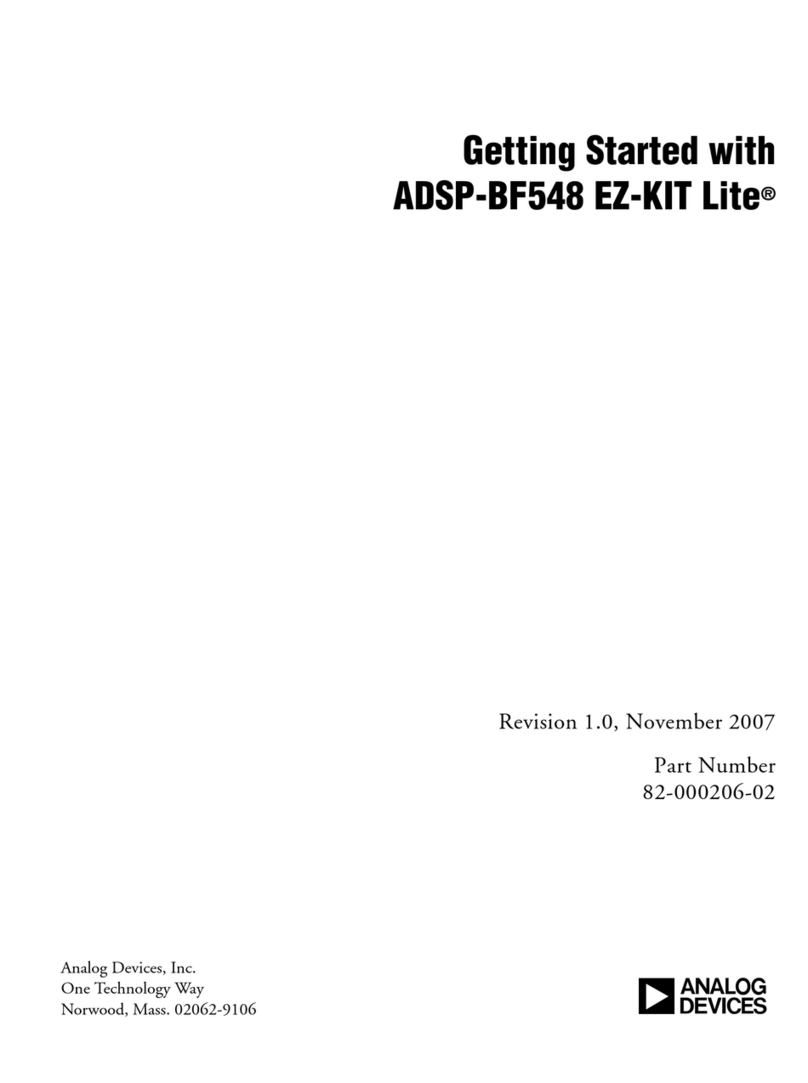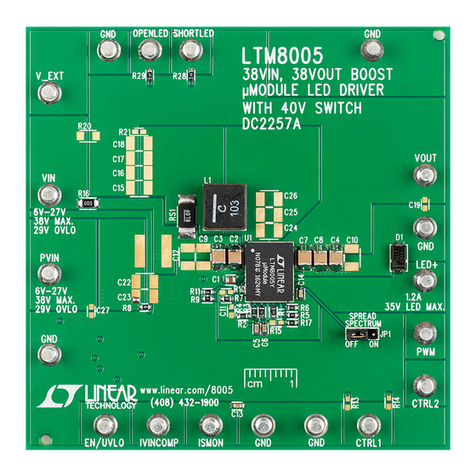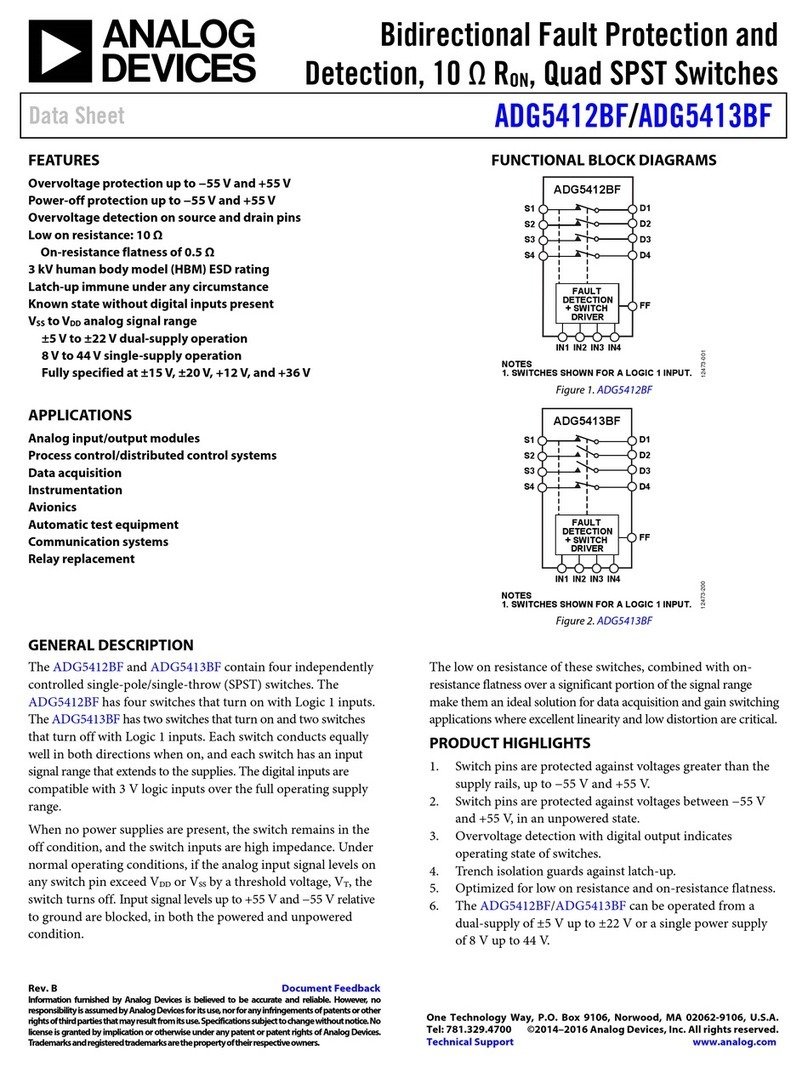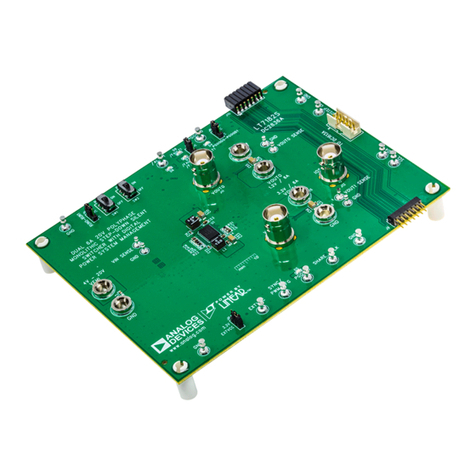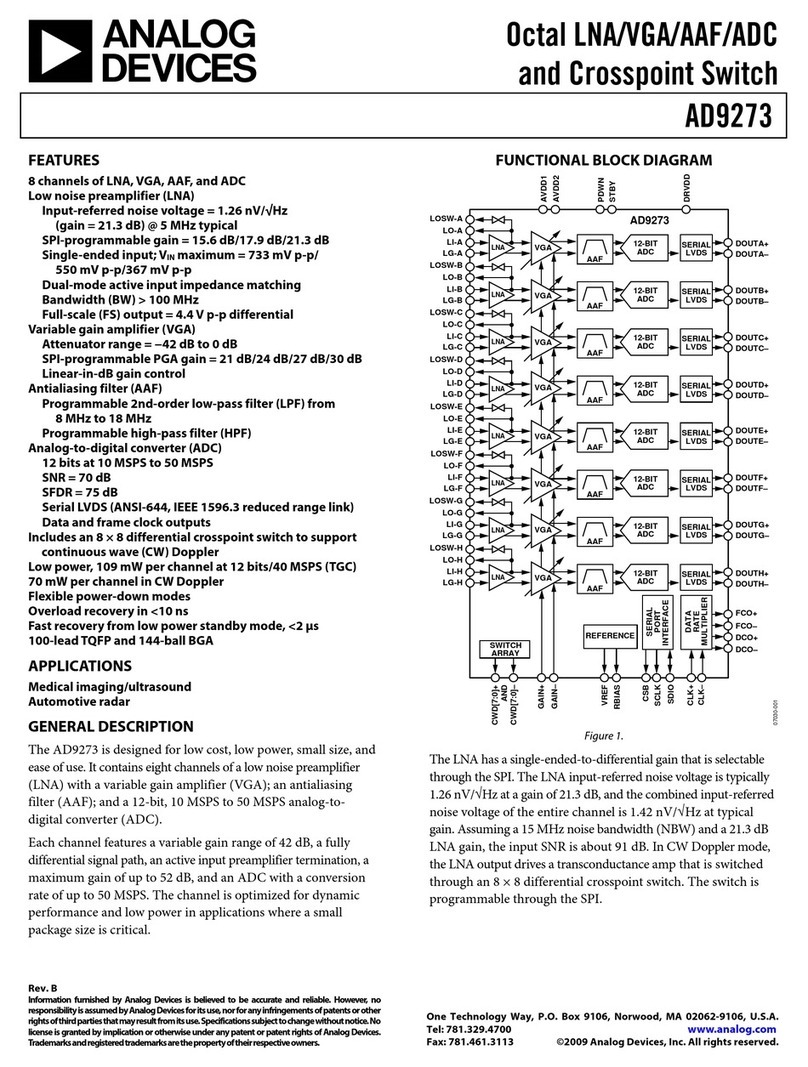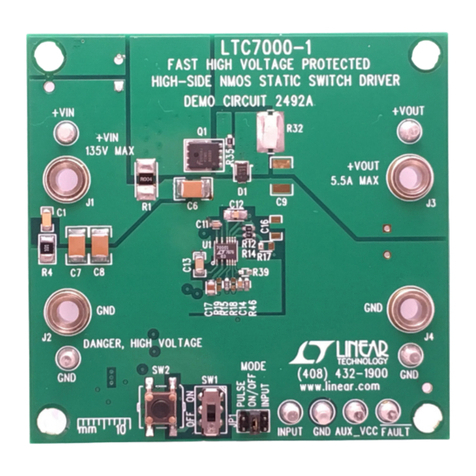
8
DEMO MANUAL DC2991A
Rev. 0
PARTS LIST
ITEM QTY REFERENCE PART DESCRIPTION MANUFACTURER/PART NUMBER
Required Circuit Components
1 1 C1 CAP., 0.01μF, X7R, 10V, 10%, 0201 MURATA, GRM033R70J103KA01D
2 2 C2, C3 CAP., 4.7μF, X6S, 6.3V, 20%, 0402 MURATA, GRM155C80J475MEAAD
3 2 C4, C5 CAP., 33μF, X5R, 10V, 20%, 0805 TDK, C2012X5R1A336M125AC
4 1 C6 CAP., 10pF, C0G, 50V, 5%, 0402, AEC-Q200 MURATA, GCM1555C1H100JA16D
5 2 C13, C14 CAP., 1μF, X7T, 6.3V, 20%, 0201 MURATA, GRM033D70J105ME01D
6 1 L1 IND., 0.33μH, PWR, FIXED, 20%, 6.3A, 21mΩ, 0806 MURATA, DFE201612E-R33M=P2
7 1 R1 RES., 140k, 1%, 1/16W, 0402, AEC-Q200 VISHAY, CRCW0402140KFKED
8 1 R2 RES., 100k, 1%, 1/16W, 0402, AEC-Q200 VISHAY, CRCW0402100KFKvED
9 1 U1 IC, 5V, 4A SYNCHRONOUS STEP-DOWN Silent Switcher, LQFN ANALOG DEVICES, LTC3308AEV#PBF
Additional Demo Board Circuit Components
1 2 C7, C8 CAP., 330μF, TANT. POSCAP, 6.3V, 20%, 7343, 25mΩ, TPE PANASONIC, 6TPE330ML
2 1 C9 CAP., 0.1μF, X7R, 16V, 10%, 0402, AEC-Q200 MURATA, GCM155R71C104KA55D
3 2 C10, C11 CAP., 10μF, X7S, 6.3V, 20%, 0603 TDK, C1608X7S0J106M080AC
4 2 C15, C16 CAP., 1μF, X7T, 6.3V, 20%, 0201 MURATA, GRM033D70J105ME01D
5 1 L2 IND., 100Ω @ 100MHz, FERRITE BEAD, 25%, 8A, 6mΩ, 1812 WURTH ELEKTRONIK, 74279226101
6 1 Q1 XSTR., MOSFET, N-CH, 40V, 15.9A, PPAK SO-8 VISHAY, SIR426DP-T1-GE3
7 1 R3 RES., 20Ω, 1%, 1/16W, 0402, AEC-Q200 VISHAY, CRCW040220R0FKED
8 1 R5 RES., 10k, 5%, 1/16W, 0402, AEC-Q200 VISHAY, CRCW040210K0JNED
9 1 R6 RES., 1MΩ, 1%, 1/16W, 0402, AEC-Q200 VISHAY, CRCW04021M00FKED
10 1 R7 RES., 249k, 1%, 1/16W, 0402, AEC-Q200 VISHAY, CRCW0402249KFKED
11 1 R8 RES., 100k, 5%, 1/16W, 0402 YAGEO, RC0402JR-07100KL
12 1 R9 RES., 0Ω, 1/16W, 0402 VISHAY, CRCW04020000Z0ED
13 1 R10 RES., 10k, 5%, 1/10W, 0402, AEC-Q200 PANASONIC, ERJ2GEJ103X
14 1 R11 RES., 0.1Ω, 1%, 2W, 2512, SENSE, AEC-Q200 IRC, LRC-LR2512LF-01-R100-F
Hardware: For Demo Board Only
1 10 E1-E3, E5, E12, E14-E16,
E19, E21
TEST POINT, TURRET, 0.064 MTG. HOLE, PCB 0.062" THK MILL-MAX, 2308-2-00-80-00-00-07-0
2 6 E4, E7, E11, E13, E18, E20 TEST POINT, TURRET, 0.094 MTG. HOLE, PCB 0.062" THK MILL-MAX, 2501-2-00-80-00-00-07-0
3 5 E6, E8-E10, E17 CONN., BANANA JACK, FEMALE, THT, NON-INSULATED,
SWAGE, 0.218"
KEYSTONE, 575-4
4 1 JP1 CONN., HDR, MALE, 1×4, 2mm, VERT, ST, THT WURTH ELEKTRONIK, 62000411121
5 1 JP2 CONN., HDR, MALE, 1×3, 2mm, VERT, ST, THT WURTH ELEKTRONIK, 62000311121
6 4 MP1-MP4 STANDOFF, NYLON, SNAP-ON, 0.50" WURTH ELEKTRONIK, 702935000
7 0 TP1, TP3 CONN., U.FL, RECEPT, ST SMD, 0Hz to 6GHz 50Ω HIROSE ELECTRIC, U.FL-R-SMT-1(10)
8 2 XJP1, XJP2 CONN., SHUNT, FEMALE, 2 POS, 2mm WURTH ELEKTRONIK, 60800213421
